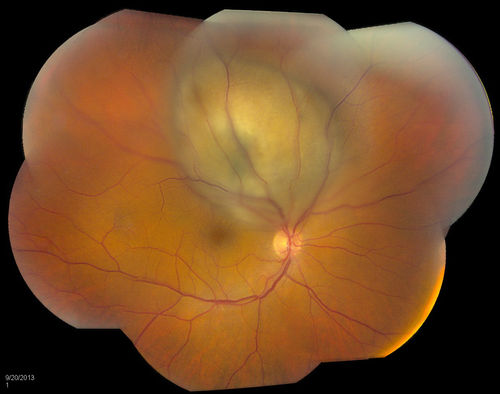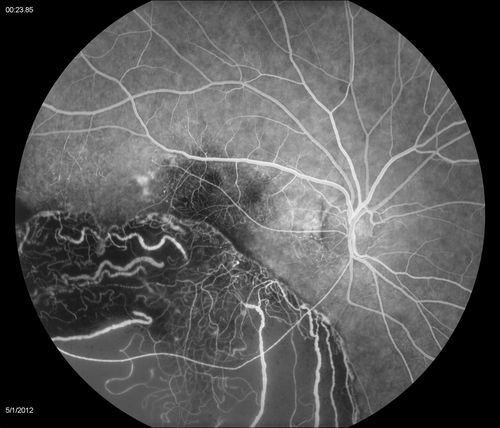Intraocular Tumors: Cause and treatment.
What types of tumors affect the eye?
Malignant tumors can metastasize to the eye, just as they can metastasize to other parts of the body. The most common cancers that affect the internal structures of the eye originate in the breast, lung, prostate, and bone marrow (leukemia). Typically, these cancers cause tumors within the eye after the cancer has been diagnosed elsewhere. Metastatic tumors within the eye are usually treated with systemic chemotherapy, which also fights the cancer in other parts of the body. Occasionally, radiation therapy has been used to treat the eye more directly.
Tumors can also originate within the eye itself. The most common primary malignant tumor that occurs in the adult eye is a choroidal malignant melanoma. This typically occurs silently in patients ages 55 and older. It occurs much more frequently in Caucasians. Unlike melanoma, sunlight does not appear to play a role in the development of these cancers.
What is a choroidal melanoma and how is it diagnosed?
Most people are familiar with melanoma, a dangerous type of skin cancer involving the melanocytes that give the skin its color. Skin melanomas are associated with unprotected exposure to the sun, especially in youth. Unlike skin melanomas, choroidal melanomas have not been linked to sun exposure, but they are more common in persons with lighter skin pigment. Similar to skin melanomas, intraocular melanomas are believed to arise from small benign pigmented areas called nevi. An intraocular nevus is best examined by dilating the pupil of the eye and looking with special lenses. Specialized digital imaging may also be taken to compare to future exams for any changes. If a pigmented area within the eye becomes larger and thicker, an ultrasound is usually performed to measure the area and check for characteristics suspicious for a malignant melanoma

